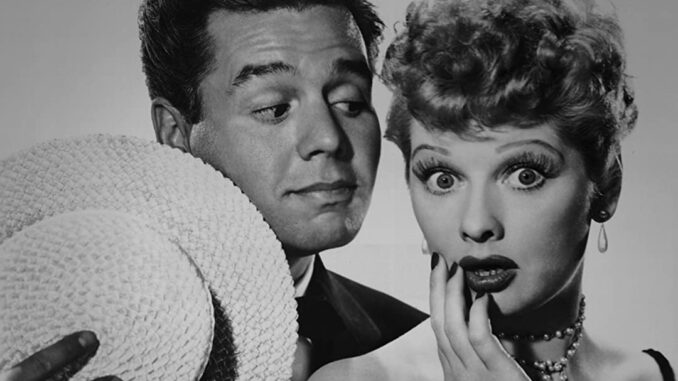
On June 29, 1966, CBS had an internal debate over its morning programming: Whether to cut to a news conference about a turning point in the Vietnam war — the U.S. bombing of Hanoi and Haiphong — or to air a decade-old “I Love Lucy” rerun. They decided to stick with “Lucy.”
The sitcom, which ran 1951-57, is more than beloved: It’s become part of our collective unconscious. The word “iconic” is overused, but it certainly applies to “I Love Lucy.”
So it was an act of daring for writer-director Aaron Sorkin, stars Nicole Kidman and Javier Bardem and the team to center their Oscar-worthy film, Amazon’s “Being the Ricardos,” around the show and its creators.
What drew him to the project?
“A few things,” Sorkin says, “but mostly the contrast between the real people and the people you see on TV. And the fact that people even today have such an intense relationship with Lucy and Desi — except it’s really with Lucy and Ricky Ricardo; audiences just think it’s with Lucy and Desi.”
“The structure I came up with, having it all take place during the production of an episode of ‘I Love Lucy,’ got me excited. In addition, there were the very interesting points of friction, between Lucy and Desi, Lucy and Vivian Vance, Lucy and [producer] Jess Oppenheimer. I was really loading them up with obstacles and pressures.”
“As for trepidation — this is an iconic show, these are iconic characters — you have to leave that behind. I give a lot of credit to Nicole and Javier. They don’t need to take this kind of risk, and they did.”
Sorkin adds, “I told Nicole and Javier that I wasn’t looking for impersonations. I knew from the beginning we weren’t gonna use prosthetics. I didn’t want anything between us and the performance. I didn’t want anyone saying how great the prosthetics are.”
Variety’s Archives covered every step in the evolution of “I Love Lucy,” including the 1951 taping of the pilot and when the title was finally given to the project.
Near the end of its first season, on May 1, 1952, Variety reported American Research Bureau’s estimate of 29 million viewers every week, a larger audience than a hit movie earned during its entire run. A year later, ARB said viewership had grown by 33%, mostly because there were more homes with TV sets. In 1955, ARB said “Lucy” was being watched in 47% of TV homes.
Variety also chronicled Desilu, from its 1950 formation to its huge success. On July 31, 1957, Variety reported that Desilu had 18 series in the works. That same year, the newspaper front-paged that Desilu was buying RKO-Pathe Studio; thus Ball would own the lot where she was once an employee.
One of Desilu’s series was “The Walter Winchell File.” Sorkin’s film makes clear that Winchell was an antagonist as he spread rumors of Ball’s communist party membership, so it’s ironic that they would be united. But “Ricardos” also shows that the Desilu duo had a great business sense, which apparently outweighed other considerations.
The film shatters the notion that Ball and Arnaz were like their TV counterparts. The Ricardos would never greenlight “The Untouchables,” “Star Trek” or “Mission: Impossible,” for example.
Sorkin makes the duo three-dimensional. They’re still iconic, but he also makes them human.
